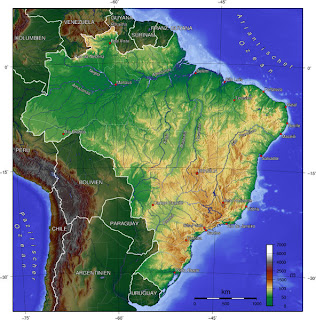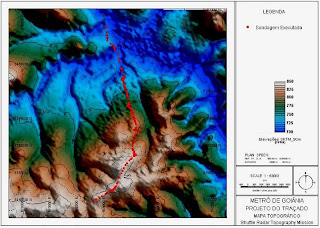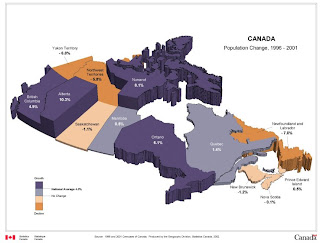This is a Flow map. Flow maps show the movement of objects from one location to another, such as the number of people in a migration for example. In this illustration, it shows where offices will migrate to from its original headquarters.
Wednesday, September 16, 2009
Isoline map
Proportional circle map
http://www.neiu.edu/~jrthomas/377/circle.jpg

Choropleth map
Dot distribution map
Hypsometric map
Cadastral map
Thursday, September 10, 2009
Thematic map
Planimetric map
This is a Planimetric map. Planimetric maps show horizontal distance with no relation to vertical height. These types of maps usually gives the impression that they are created on an X, Y coordinate axis. Using this type of map, the viewer can make a good guess as to how far one distance is from the other.

Topographic map
This is a topographic map of the country Brazil. Topographic maps show different levels of land elevations in terms of feet above sea levels. The map's legend illustrates the differences with color variations. You can clearly see that Chile has a higher elevation than Paraguay by their corresponding colors that relates to feet above sea level.

Friday, August 28, 2009
Denver statistical map

This is a World map of Spain, France, and Portugal that was published in 2003. On this map there is a clear view of the surrounding Sea's, Bay's, and Ocean's that encompass the land.
http://www.map-of-spain.co.uk/maps-of-spain/spain/map-of-spain2.jpg
Subscribe to:
Comments (Atom)








